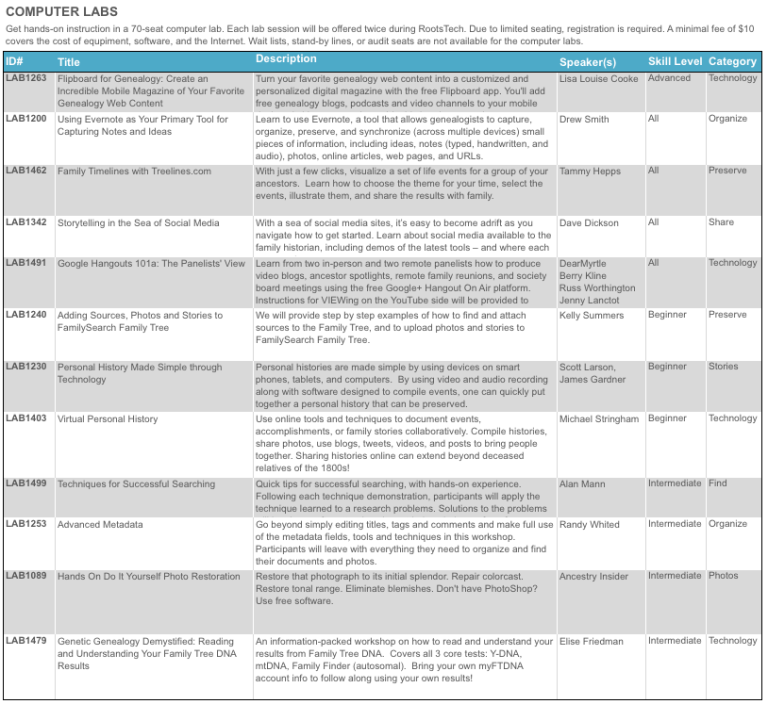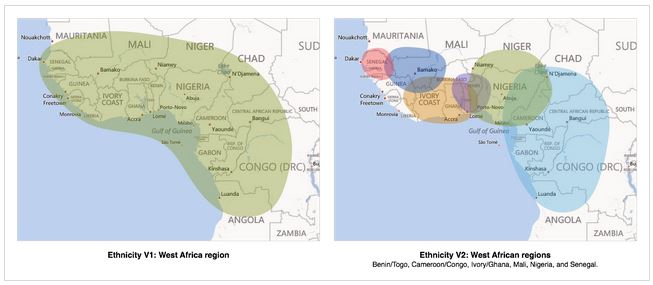by Lisa Cooke | Jan 13, 2014 | 01 What's New, DNA
 It’s not uncommon for genetic DNA tests to reveal that you’re not related to people you thought you were. But here’s a twist I’ve never heard before.
It’s not uncommon for genetic DNA tests to reveal that you’re not related to people you thought you were. But here’s a twist I’ve never heard before.
A family who had a daughter by artificial insemination of the husband’s sperm eventually decided to do some DNA testing for family history. Imagine the wife’s shock when she discovered that her husband and daughter shared no DNA!
They got a bigger shock when they did a little research. Apparently the biological father worked at the lab that handled the family’s insemination process. The man is dead now, but it appears he may have deliberately swapped in his own sample for the father’s.
Of course lots of questions have come up–including how many other children may have received the DNA of a man who was a convicted kidnapper.
My heart goes out to this family and to others who now fear their genetic fatherhood was hijacked. Read the full story here (it’s popped up in several news outlets now, but I first saw it at KUTV.com).
by Lisa Cooke | Dec 18, 2013 | 01 What's New, DNA
I recently blogged about some governmental red tape being faced by 23andMe. They have suspended sales of their “health-related genetic tests” and stopped providing interpretive information about those tests, but are continuing to offer their genealogy products. Just thought I’d share!
by Lisa Cooke | Dec 5, 2013 | 01 What's New, DNA, History
 Here’s a cool website about ancient civilizations. It’s TheAncientWeb.com, and it looks like a fun and easy way to get up to speed on history.
Here’s a cool website about ancient civilizations. It’s TheAncientWeb.com, and it looks like a fun and easy way to get up to speed on history.
As the title hints, this site is all about deep roots. It covers ancient societies in all parts of the world: North and South America, Europe, the Near East, Africa, Asia and Oceania. You’ll find history and images of artifacts on peoples ranging from Arabians to Vikings!
This is a great interactive tool for brushing up on ancient history. Check it out with your kids or grandkids who are exploring these topics in school or because they’re reading books like the Percy Jackson & the Olympians Series
(based on Greek and Roman mythology).
But this is also a helpful resource if you’re looking to learn more about your “deep ancestry” as identified by DNA tests. You may never know if you descend from a famous (or infamous) warlord, ruler or explorer. But genetic tests are becoming more specific about deep geographic roots. So maybe it’s worth checking out a little Viking warrior fashion or learn about the ancient empire of the Mandingo on this site!
by Lisa Cooke | Oct 17, 2013 | 01 What's New, Conferences, FamilySearch, Flipboard, RootsTech
 Have I got a promo code for you!
Have I got a promo code for you!
Want to save off your registration for what’s shaping up to be one of the biggest family history events ever? Of course you do!
From now until November 30, 2013, Genealogy Gems blog readers can save an additional $10 off the already discounted early registration price for RootsTech 2014, happening February 6-8 in Salt Lake City. The promo code is RT14LTO by November 30.
#RootsTech promises to be a spectacular learning event, with over 200 classes and a dozen hands-on labs taught by knowledgeable experts, special lunchtime and evening events and more. Before January 6, you can get a full-access pass for just $159, an $80 savings off the full price of $239. But again, register before November 30 with the promo code above and you’ll only pay $149.
The full schedule of classes will be available when the app comes out in November, but RootsTech has posted the computer lab schedule. These labs were incredibly popular last year. They sold out fast and had to add more! Your early registration gives you dibs on labs like these, including my own class on Flipboard:

by Lisa Cooke | Sep 19, 2013 | 01 What's New, African-American, Ancestry, DNA, Immigration
AncestryDNA announced last week that it has been able to identify six unique historic populations in West Africa. It’s a breakthrough they call a “finer-resolution genetic ethnicity estimate for individuals with West African ancestry.” They have even used this technology to start connecting the dots between those groups and millions of African-Americans whose ancestral paper trail was annihilated during the era of slavery.

For this latter development, the AncestryDNA team uses the “cluster genealogy” approach: the concept that people from the same location often migrated to the same areas. Of course, slavery forced apart families and other natural migration groups, both in Africa before the crossing and in the U.S. or other destinations. And the few records that remain of many of these folks and their enslaved descendants don’t include full names, place of origin or other data we rely on to make family connections. (Learn more about how to research African-American roots in Genealogy Gems Podcast Episode 159 with Dr. Deborah Abbott.)
It’s encouraging to read that AncestryDNA has had some success hooking up regional groups of African-Americans with specific areas of Africa. “Though this project is still in its infancy, the science team has made some progress,” AncestryDNA reports. “First, we looked at the birth locations of individuals in the trees of all African Americans. Then, we looked for locations where, relative to all African Americans, there appeared to be an over-representation of birth locations in trees of individuals with a particular West African ancestry. For individuals with Senegalese genetic ethnicity, we found what seems to be an over-representation of birth locations in South Carolina and Georgia in the 1700’s and 1800’s.”
Page 16 of 17« First«...10...1314151617»
 It’s not uncommon for genetic DNA tests to reveal that you’re not related to people you thought you were. But here’s a twist I’ve never heard before.
It’s not uncommon for genetic DNA tests to reveal that you’re not related to people you thought you were. But here’s a twist I’ve never heard before.







